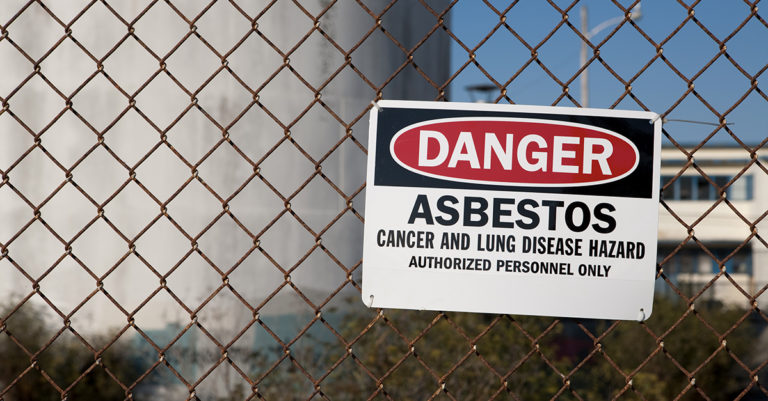
The top-paid actor in 1974, Steve McQueen was best known for his roles in movies like “The Magnificent Seven,” “The Great Escape,” and “The Inferno.”
In addition to acting, McQueen was also a race car driver and U.S. Marine Corps veteran. However, his favorite role was perhaps that of a father and husband with a great love for his family.
“Steve McQueen was a true American icon, playing heroes who straddled the divide between the ideals of post-World War II America and the social revolutions of the sixties and seventies,” explained John Simmons, U.S. Army veteran and firm founder.
In 1980, McQueen sadly passed away from mesothelioma, a preventable cancer caused by exposure to asbestos. He was just 50 years old.
During his youth and throughout his career, asbestos usage was at its highest point in recorded history. Like many other veterans, McQueen was likely exposed to asbestos during his military service.
The acclaimed actor’s death is a reminder that anyone with a history of asbestos exposure, regardless of their status, may be at risk for mesothelioma.
Steve McQueen’s Asbestos Exposure History
McQueen was exposed to asbestos throughout his life — at construction sites, in the military, on sound stages, and even in the lining of race car brakes. His most potent exposure to asbestos, though, occurred during his time with the U.S. Marines.
When he was 17 years old, McQueen got permission from his mom to join the U.S. Marine Corps and was sent off to training in South Carolina. He was later stationed at Camp Lejeune, where he was required to remove asbestos lagging from pipes.
McQueen himself is quoted as saying that the asbestos was so thick in the air he could barely breathe.
After his service, he began performing in 1952, when movie sound stage insulation often contained asbestos. While driving race cars, he wore a flame-resistant suit that was made with asbestos. There was also asbestos in the car and motorcycle brakes he worked on.
Some say that Steve McQueen lived the American dream, transcending his underprivileged origins and rising to fame and success. Sadly, it was during his time doing blue-collar work and serving his country that he was subjected to the asbestos that would kill him.
Steve McQueen & Mesothelioma
In 1978, McQueen began to experience shortness of breath and a persistent cough. His girlfriend Barbara noticed his symptoms and encouraged him to go see a doctor.
“His breathing wasn’t quite right,” she said. “He wasn’t the same Steve that I knew, and he was kind of running down. But he wasn’t old enough to be running down.”
Despite starting antibiotics and quitting cigarettes, McQueen’s symptoms didn’t improve. One day, after disappearing on his motorcycle, Barbara found him alone on a picnic table in a park. It was there he finally admitted, for the first time, that something was seriously wrong.
McQueen went to a doctor in Los Angeles for X-rays and underwent a biopsy. After this procedure, he was officially diagnosed with pleural mesothelioma in 1979 — and the couple was given no hope.
“The doctors in LA basically told us to enjoy the time we had left,” explained Barbara. “I don’t remember exactly what they said about options. All I recall is that the doctors said surgery was out of the question and chemo didn’t really work. It was a rare cancer, and all of their patients had died.”
Refusing to let the diagnosis rule their lives, the pair married soon after and began seeking out alternative treatment options. They tried everything they could, including a surgery in Mexico to remove tumors that he was previously told were inoperable.
Hours after the surgery, McQueen passed away in the hospital from cardiac arrest.
Honoring McQueen’s Fight Against Mesothelioma
The true tragedy of McQueen’s story, and every other mesothelioma death, is that this illness is entirely preventable.
Many companies knew about the dangers of asbestos as early as the 1920s, yet continued selling asbestos-containing products without any warnings at the cost of thousands of lives.
Even today, approximately 3,000 people in the United States are diagnosed with mesothelioma each year.
After McQueen’s death, Barbara began working with the Asbestos Disease Awareness Organization, which is a nonprofit focused on preventing asbestos-related diseases through education, advocacy, and community initiatives.
To raise awareness about the dangers of asbestos, Simmons Hanly Conroy has hosted community-building events like Miles for Meso and donated over $21 million to cancer research.
“Steve McQueen fought this disease to the very end. Honoring him and his fight reminds us how far the asbestos prevention community has come since 1980, when those with a mesothelioma diagnosis didn’t have the answers or support they deserved.”
– John Simmons, U.S. Army Veteran, Chairman, & Firm Founder

Simmons, an avid biker himself, understood McQueen’s passion for riding. As an advocate for asbestos victims, he also related to McQueen’s struggle with mesothelioma, having lost his grandmother to the cancer. When the chance came up to purchase one of the star’s motorcycles, Simmons made the fitting purchase.
In fact, McQueen’s motorcycle — a 1938 Triumph 500cc 5T Speed Twin — is on display at the firm’s office in honor of his memory and to serve as a constant reminder of his battle against pleural mesothelioma.
Get Help After a Mesothelioma Diagnosis
Families impacted by mesothelioma may be able to work with Simmons Hanly Conroy to file a mesothelioma lawsuit and hold the companies responsible for their asbestos exposure accountable.
Our national mesothelioma law firm was founded over 25 years ago to fight for victims of asbestos exposure and their loved ones.
We have over 60 mesothelioma lawyers who have helped thousands of families across the country secure justice and compensation from the companies that put them in harm’s way.
If you or a loved one suffers from mesothelioma, see how we may be able to help you pursue compensation for medical bills, lost wages, and more.
Keep reading: Find out about other celebrities and famous people who battled mesothelioma.




